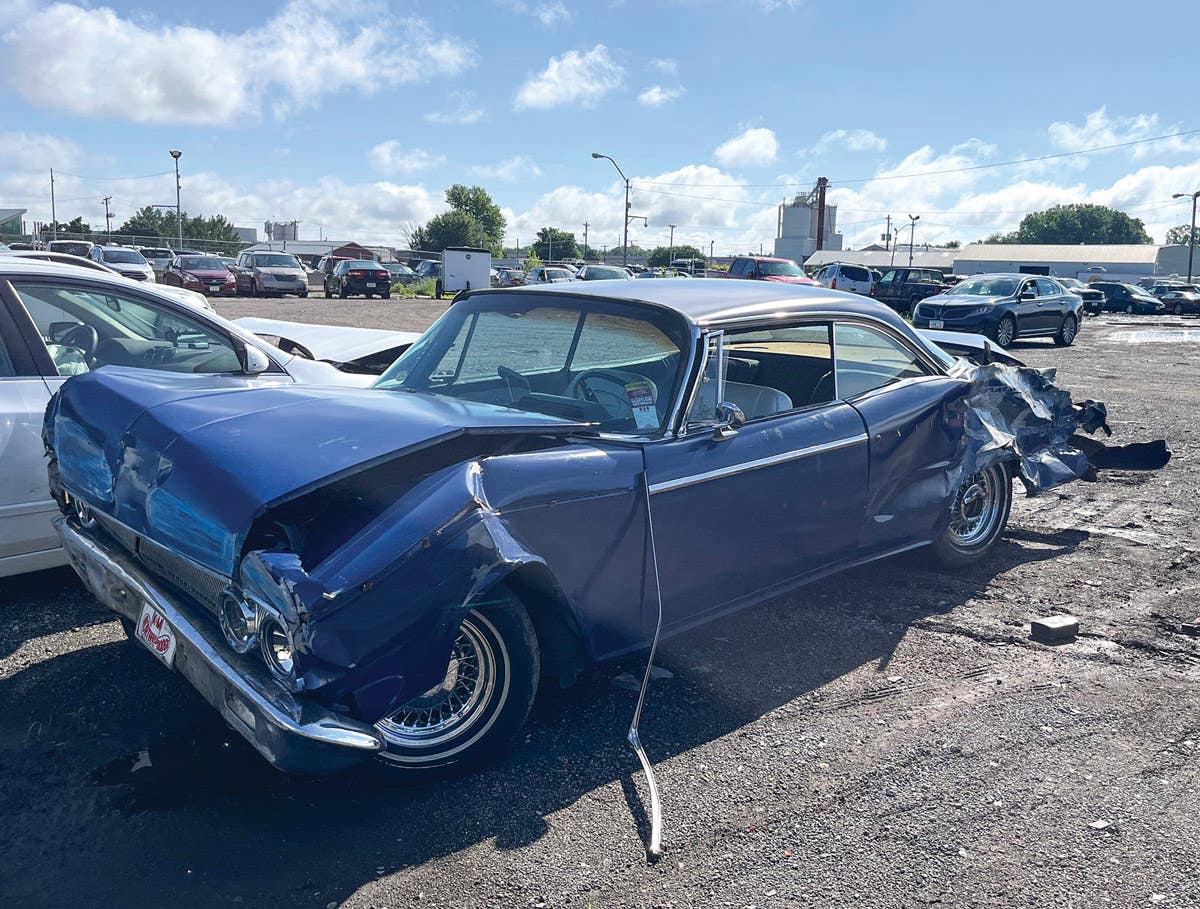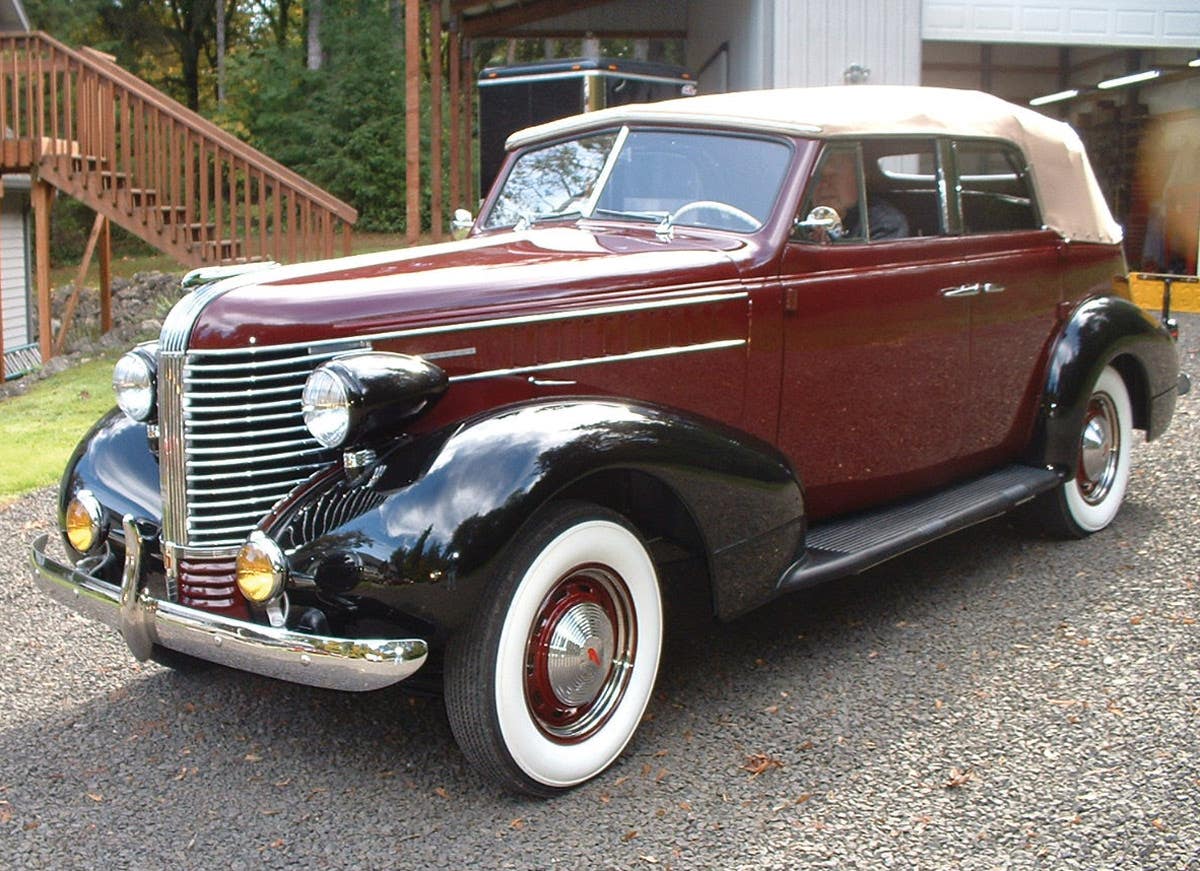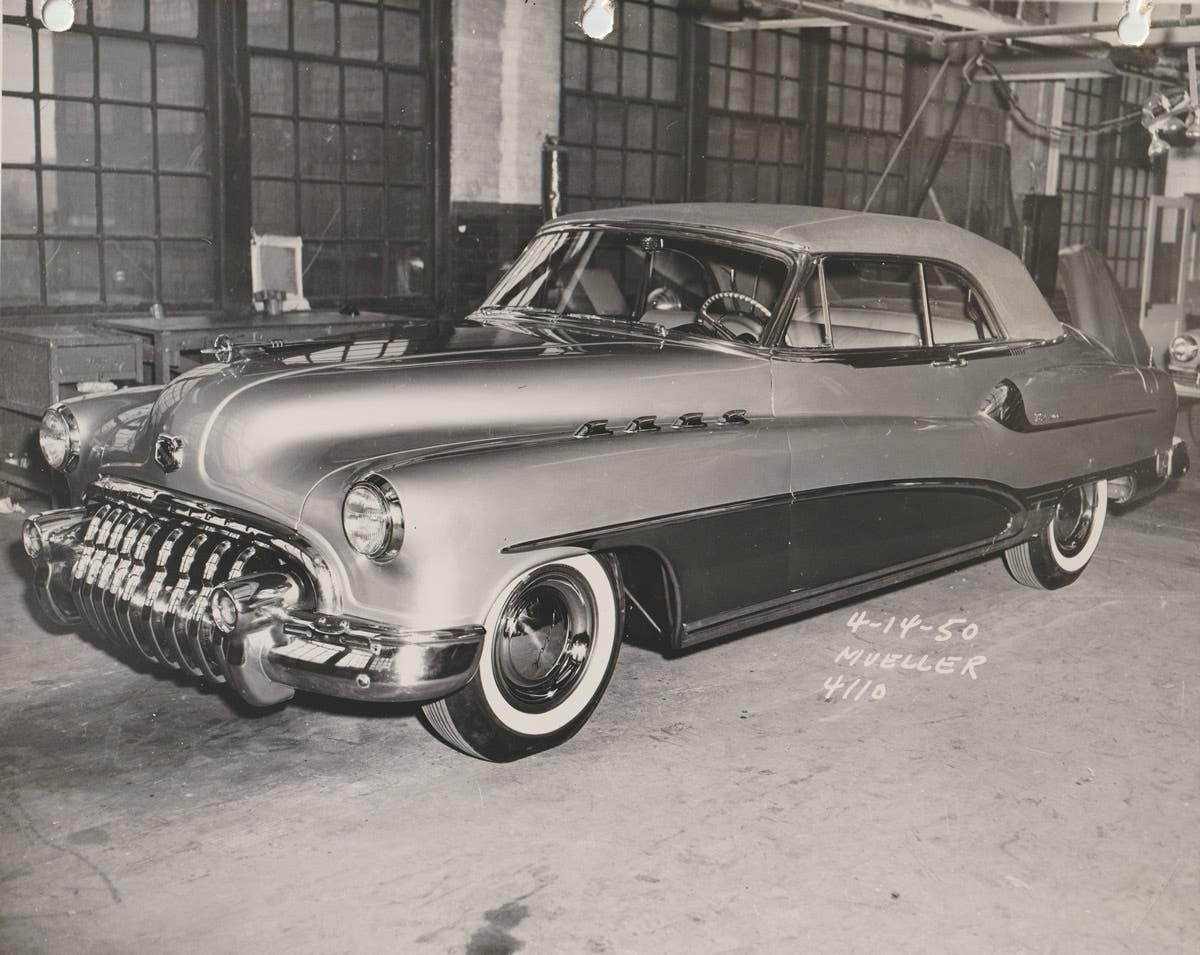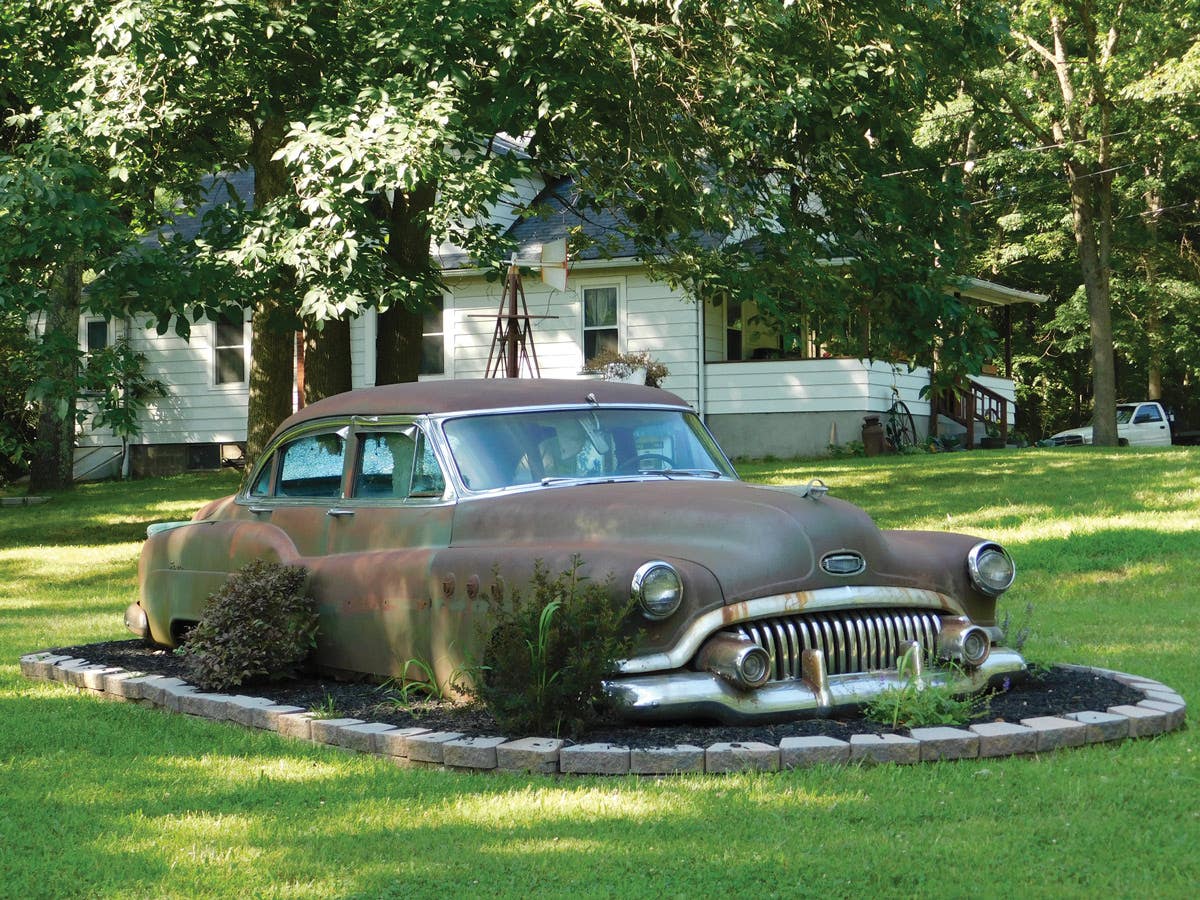Car of the Week: 1930 Cadillac V-16 Fleetwood
America was sliding into an economic disaster called the Great Depression when the 1930 Cadillacs arrived in September 1929. Things would be tough on the U.S. economic front for much of the next decade, but there was some good news for car buffs in 1930: The great V-16 Cadillacs arrived.
America was sliding into an economic disaster called the Great Depression when the 1930 Cadillacs arrived in September 1929. The Cadillac V-8 was enlarged to 353 cubic inches, which created a new Series 353 line. But in December came the big news: Cadillac management announced that a new line powered by a 452-cubic-inch V-16 was being readied for the New York Automobile Salon in January 1929. A five-passenger Imperial Landau Sedan was the only car actually exhibited at that venue. The V-16 utilized a 148-inch wheelbase. But before long, an array of 54 semi-custom body styles by Fleetwood were available.
Thus the famed Cadillac V-16 was born.
Series 452 prices started at a little over $5,000 and ran as much as $10,000. That compared to $435 for a 1930 Model A Ford roadster.
Body details introduced on the 1930 V-16 included single-bar bumpers, dual horns, a concave monogram bar, a radiator screen, 13-inch Guide “Tilt-Ray” headlights, dual rear lights matching the headlights, triple moldings on the dust shield panels of straight-sill styles, five doors in the hood, a single matching door in the side of the cowl and none, one or two rectangular vent doors in the top of the cowl. Most bodies with a recessed hood/cowl had one triangular door in the top of the cowl.
1930 Cadillac Series 452 Fleetwood "Fleetdown" roadster
Although full-custom bodies were built by Fleetwood, Murphy, Waterhouse, Saoutchik, Vanden Plas, Pinin Farina and others, most were “catalog customs” built by Fleetwood. A few cars had Fisher bodies. Only about 20 percent were open or convertible models, two-thirds were five- or seven-passenger Sedans or Imperial Sedans and the rest were coupes or town cars. More than 50 body styles were offered, but the list consisted of only a few basic body shells with several variations each. For instance, buyers could chose from metal or leather quarters with or without rear quarter windows, from fixed or collapsible (landau) quarters with or without an Imperial-type division window, from straight sills or coach sills and from plain or recessed hood and cowl styles and so on.
With a few exceptions, the “41” styles had a plain hood and straight sills, the “42” styles had a plain hood and coach sills and the “43” styles had a recessed hood and cowl and straight sills. Windshield treatments varied from vertical vee to 22 degree sloping.
An 18-degree flat crank-up Vision & Ventilating “Madame X” windshield was used on styles 4130, 4155, 4161, 4175, 4276 and 4476; 7) a 21-degree flat swing-out windshield was used on style 4235 and 8) a 22-degree flat, divided windshield was used on style 4260.
The sobriquet “Madame X” is not prominent, if used at all, in Cadillac promotional literature. Perhaps the only place Cadillac printed it is in body style listings found in various parts lists as early as March 1930. The term is associated with the cars having job/style numbers 4130, 4155, 4161, 4175, in plain, -S, -C or -SC variations. In later parts lists, job number 4476 is listed as having a “Madame X” windshield. “Madame X” has a Hollywood flavor, but is no more inappropriate than other Fleetwood Body Company style designations such as “Fleetbourne” and “Fleetdown.” The term must have arisen from a distinctive styling feature common to the four basic body styles. Further, the term more likely came from Detroit than from the Pennsylvania Dutch country where Fleetwood was located.
The most distinctive styling feature of the “41” series bodies, which were built in Detroit, was the 18-degree flat, crank-up Vision & Ventilating windshield. It is unlikely that the Pennsylvania versions, with their vertical-vee swing-out windshields were thought of as “Madame X” bodies. Job/style number 4276, being style 4476 with coach sills, also has a “Madame X” windshield. Chrome-plated window reveals were used on “41” bodies, but were not unique to those styles. Although early body specs listed chrome-plated reveals, revised body specs from July 1930 specified painted window reveals on “41” bodies. Painted window reveals on “Madame X” bodies are probably as rare as the “standard” rear-mounted spare tire. In simplest terms, 1930 Fleetwood four-door bodies with the 18-degree windshield, mounted on the Cadillac V-16 chassis, were “Madame X” styles and two coupe body styles also used the “Madame X” windshield.
The V-16 frame was similar to that used under the Series 353 V-8 models, except for a five-point engine mount on the V-16. The brake system had a vacuum-assist function controlled by manifold vacuum, not a vacuum pump. The big V-16s used 16-1/2-inch diameter brake drums. Specially balanced whitewall tires were used. The driveline featured a rear engine support at the tail of the transmission. Heavier clutch linings were used at first, but chassis unit 7-2991 and later cars produced used the same thinner clutch lining as V-8 models. Rear axle shafts were of the same design used on Series 353 V-8s, but were made of special steel. A 3.47:1 optional final drive ratio was dropped in mid-model year.
The appearance of the V-16 was a beautiful example of outstanding industrial design and much attention was paid to its eye appeal. It looked neat with its polished aluminum parts, bright enamel finish and shielded wires. Covers were used on the engine and dashboard to hide the plumbing and controls. Twin ignition coils were mounted in recesses in the radiator top tank. The spark plug wires came out the rear of the double-decker distributor cap and disappeared under the cover inside the vee. The narrow (45 degree) vee allowed for outboard mounting of manifolds and dual carburetors. Intake pipes from higher in the engine compartment were added at engine number 702502 to eliminate the problem of road splash entering the carburetors. Fuel feed was by dual vacuum tanks operated by vacuum pump.
Engineer Owen Milton Nacker designed the all-new engine with a three-inch bore and four-inch stroke. It was basically two straight eights sharing a common crankshaft. Each bank of cylinders had its own fuel-distribution system and exhaust system. The overhead-valve engine featured hydraulic valve silencers. It was capable of propelling these very heavy cars at speeds ranging from 80-100 mph. The only faster American car was a “Doosey.”
V-16 Engine Spec’s:
45 degree, overhead valve. Cast nickel-iron blocks on silicon/aluminum crankcase. Bore and stroke: 3 x 4 inches. Displacement: 452 cid C.R.: 5.35:1 early standard, 5.11:1 standard, 4.98:1 optional Brake horsepower: 175-185 @ 3400 rpm. SAE/Taxable horsepower: 57.5. Main bearings: five. Valve lifters: pushrod/rocker arm with hydraulic rotary eccentric silencer in rocker arm. Carburetion: float feed, auxiliary air control, manufactured by Cadillac under C.F. Johnson patents.
Chassis:
Wheelbase: 148 inches. Overall length: approximately 222-1/2 inches. Front/Rear Tread: 59/59-1/2 inches. Tires: 7-19 early, 7.50-19 mid-model.
Technical stuff:
Selective, synchromesh transmission. Speeds: 3F/1R. Left drive, center control, (right-hand drive optional). Twin disc clutch. Shaft drive, (torque tube). 3/4 floating rear axle, spiral bevel drive. Overall ratio: 4.39:1 standard, (3.47:1), 4.07:1, 4.75:1 optional vacuum assisted mechanical brakes on four wheels. Wood artillery wheels (wire, disc, demountable wood optional). Wheels: 19 inches.
Options list:
Mirrors ($10-32). Sidemount cover(s) ($5-40). Tonneau windshield ($185). Wind wings ($47.50). Radio ($200). Heater ($41-55). Heron or Goddess ornament ($20). Auxiliary lights ($37.50-75). Seat covers ($26.75-73.50). Trunks ($100-119). Five wire wheels ($70). Six wire wheels, fender wells, trunk rack ($210). Five demountable wood wheels ($50). Six demountable wood wheels, fender wells, trunk, rack ($190). Five disc wheels ($50). Six disc wheels, fender wells, trunk rack ($190). Fenders other than black ($100).
*As an Amazon Associate, Old Cars earns from qualifying purchases.







